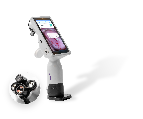JERUSALEM POST (February 1, 2019)
It is 2019. We have autonomous cars, artificial intelligence, and highly intelligent drones that can fly for miles and record in 4K resolution. And yet? Despite all the rumors over the years, the endless research, and incredible innovation being deployed in the field, cancer is still very much here, bringing with it endless tragedy. Of course, Israel is leading the way in cancer breakthroughs and there is room for optimism but still, we all know someone who was affected by this horrible disease.
In addition to all the research being conducted on how to cure several types of cancer, there are some types that are easily treatable and highly curable, like cervical cancer, for example. Most people might not know this. I didn’t. When caught early, cervical cancer is a disease that is treatable with a point of care therapy that can take less than 30 minutes and at a cost lower than $28. So what’s the problem? Why is cervical cancer still a thing? Well, quite frankly, the problem is the test by which cervical cancer is detected – the Pap test. It is pretty horrible.
Many women don’t even get tested for cervical cancer, which means it is not detected early enough to treat effectively. Why not? Because the test is highly intrusive and extremely uncomfortable. Until now.
MobileODT was founded by two childhood friends, Ariel Beery and David Levitz, who combined their professional expertise of scaling global start-ups and biomedical optics to develop their flagship product, the Enhanced Visual Assessment (EVA) System, a smart mobile colposcope.
Simply put, the EVA system takes high quality images of the cervix, letting doctors see if there are any lesions present that might become cancer. It does more than just take pictures, it also allows medical providers to document cases, add annotations and filters directly to images, collaborate remotely with peers or experts in real-time, and integrate with electronic medical records (EHRs), thus reducing unnecessary paperwork. All of this in an FDA–cleared, HIPAA compliant device that weighs under one kg. And now it’s about to serve as a platform for AI tools that can augment the intelligence of the local provider and give diagnostic test results in less than a second. That can mean the difference between life and death, for the woman being examined.







